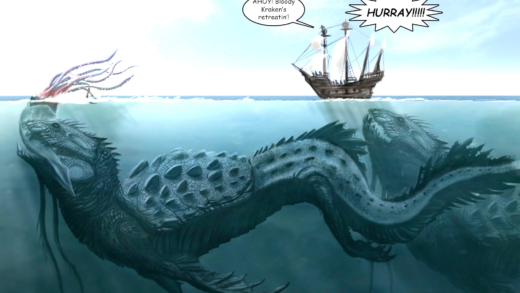This article explores the fascinating world of animal superpowers, showcasing the incredible abilities of various species, including color-changing chameleons, mimic octopuses, electric eels, and the astounding regenerative capabilities of axolotls. It also delves into the unique adaptations of poisonous frogs, nocturnal animals with enhanced vision, and other remarkable traits in the animal kingdom.
The Colorful Chameleon: How They Change Their Appearance
Animal superpowers are fascinating, and one of the most intriguing examples is the chameleon. Chameleons possess the unique ability to change their color, which serves various purposes, including communication, camouflage, and temperature regulation. This remarkable skill is due to specialized cells in their skin called chromatophores, which contain different pigments.
- Communication: Chameleons often change colors to signal their mood or status to other chameleons. A bright color might indicate aggression, while a dull hue can signify submission.
- Camouflage: These reptiles can blend into their surroundings, making it difficult for predators to spot them. This ability is crucial for their survival in the wild.
- Temperature Regulation: Chameleons can adjust their color to absorb more or less sunlight. Darker colors absorb heat, while lighter shades reflect it, helping them maintain an optimal body temperature.
Interestingly, chameleons do not change color at will; their color changes can be influenced by environmental factors and emotional states. For example, a chameleon might shift to a lighter shade in response to stress or a darker hue when feeling threatened.
In summary, the colorful chameleon showcases nature’s extraordinary abilities through its adaptive color-changing skills. This power not only aids in survival but also highlights the complex communication systems among these fascinating reptiles.
The Marvel of the Mimic Octopus: Master of Disguise
Another remarkable animal superpower belongs to the mimic octopus, known for its exceptional skills in impersonating other marine creatures. This octopus can imitate the appearance and behaviors of various animals, such as lionfish, flatfish, and sea snakes. This ability helps it evade predators and catch prey.
- Imitation Techniques: The mimic octopus uses its color-changing ability, along with body posture and movements, to replicate the look of its chosen model. For instance, by flattening its body and changing color, it can resemble a flatfish.
- Behavioral Mimicry: Beyond appearance, the mimic octopus can imitate the swimming style and defensive mechanisms of other species, enhancing its chances of survival.
- Survival Strategy: This strategy is not just for show; it is a vital survival tool. By mimicking dangerous or unpalatable creatures, the mimic octopus deters potential threats.
The mimic octopus is an extraordinary example of how animals adapt to their environments. Its ability to blend in and impersonate other species is a testament to the incredible adaptability found in nature.
Electric Eels: Nature’s Shocking Superheroes
Electric eels possess an astonishing superpower: the ability to generate electric shocks. This capability is not just for show; it serves multiple purposes, including hunting, self-defense, and communication. These fish can produce bursts of electricity that can stun prey or deter predators.
- Hunting Mechanism: Electric eels use their electric discharges to immobilize fish and other prey. The shocks can range from mild to powerful, depending on the situation.
- Self-Defense: When threatened, electric eels can unleash a series of high-voltage shocks, effectively scaring off or incapacitating potential predators.
- Communication: Electric eels also use their electrical abilities to communicate with each other, signaling their presence and intentions in murky waters.
In conclusion, the electric eel’s ability to generate electricity showcases nature’s extraordinary talents. This adaptation highlights the diverse strategies animals employ for survival in their environments, proving that sometimes, being shocking is a good thing.
Speed Demons: The Peregrine Falcon’s Incredible Velocity
Animal superpowers include the astonishing speed of the peregrine falcon. Known as the fastest bird on the planet, this remarkable creature can reach speeds of over 240 miles per hour (386 km/h) during its hunting stoop (high-speed dive). This incredible velocity is not just for show; it plays a crucial role in the falcon’s hunting strategy.
- Hunting Strategy: By diving at such high speeds, the peregrine falcon can surprise its prey, usually smaller birds. The sudden burst of speed makes it nearly impossible for its target to escape.
- Physical Adaptations: The peregrine falcon’s body is streamlined, allowing it to cut through the air efficiently. Its strong muscles and unique wing structure contribute to its impressive acceleration.
- Vision: Alongside its speed, the peregrine falcon has exceptional eyesight, enabling it to spot prey from great distances. This combination of speed and keen vision makes it a formidable hunter.
In summary, the peregrine falcon exemplifies nature’s extraordinary capabilities through its incredible speed. This adaptation not only aids in successful hunting but also highlights the evolutionary marvels present in the avian world.
Regeneration Superstars: Animals That Heal Themselves
Animal superpowers extend to the fascinating realm of regeneration. Some species have the remarkable ability to regrow lost limbs or even entire body parts, showcasing the wonders of nature’s healing capabilities. This process varies significantly among different animals, each employing unique strategies.
- Salamanders: Known for their regenerative abilities, salamanders can regrow limbs, tails, and even parts of their hearts. This capability is due to special cells called blastemal cells, which can develop into various tissues.
- Starfish: Starfish can regenerate lost arms, and in some cases, a severed arm can even grow into a new starfish. This ability is crucial for their survival, allowing them to recover from predator attacks.
- Crabs: Crabs can regrow lost claws, which is essential for their defense and feeding. The regeneration process can take several molts to complete, but it significantly enhances their chances of survival.
In conclusion, the regeneration abilities of certain animals highlight the fascinating adaptations found in nature. These superpowers not only provide insights into biological processes but also inspire scientific research in regenerative medicine.
Scar-Free Healing: The Incredible Axolotl
Axolotls possess an extraordinary superpower: the ability to heal without scars. Unlike many animals, axolotls can regenerate limbs, spinal cord, and even parts of their heart and brain, all without leaving a mark. This unique capability has drawn significant attention from scientists.
- Regeneration Process: The axolotl’s regenerative process involves the formation of a blastema, a mass of cells capable of developing into various tissues. This process allows them to regrow limbs in a matter of weeks.
- Implications for Science: Studying axolotls provides valuable insights into regenerative medicine. Understanding their healing mechanisms may lead to advancements in treating human injuries and diseases.
- Unique Genetic Makeup: Axolotls have a unique genetic structure that allows for efficient regeneration. Research into their genetics could reveal secrets to unlocking similar abilities in other species.
In summary, the axolotl stands out as a remarkable example of nature’s superpowers. Its ability to heal scar-free not only captivates the imagination but also holds potential for future scientific breakthroughs in regenerative health.
Frogs with a Twist: The Power of Poison
Animal superpowers include the fascinating abilities of poisonous frogs. These remarkable creatures use toxins as a defense mechanism, deterring predators with their potent secretions. The vibrant colors of many poisonous frogs serve as a warning to potential threats, indicating their toxicity.
- Defense Mechanism: Poisonous frogs produce toxins that can cause severe reactions in predators, making them an unappetizing choice for lunch. Some species, like the golden poison dart frog, possess enough toxin to kill a human.
- Coloration: Bright colors are not just for show; they play a critical role in survival. The vivid hues signal danger, helping frogs avoid being eaten.
- Habitat Influence: The environment also influences the toxicity of these frogs. For instance, frogs from tropical rainforests often have stronger toxins due to their diverse range of predators.
In summary, the power of poison in frogs is a stunning example of nature’s creativity in survival strategies. Their toxic abilities not only protect them from threats but also highlight the intricate relationships between predators and prey.
Night Vision: Animals That See in the Dark
Animal superpowers extend to the realm of enhanced senses, particularly the ability to see in the dark. Many species have evolved unique adaptations that allow them to thrive in low-light environments, showcasing the wonders of nature.
- Tapetum Lucidum: Many nocturnal animals, like cats and owls, possess a layer of cells behind their retinas called the tapetum lucidum. This structure reflects light, enhancing their night vision and allowing them to see in almost complete darkness.
- Enhanced Rod Cells: Animals such as raccoons have a higher number of rod cells in their eyes, making them particularly adept at detecting light. This adaptation helps them forage effectively at night.
- Unique Eyesight: Some species, like certain deep-sea fish, have developed extraordinary eyesight to navigate the dark depths of the ocean, where light is scarce.
In conclusion, the ability to see in the dark is a remarkable adaptation found in various animals. These enhancements allow them to find food, avoid predators, and thrive in their unique habitats.
Unique Abilities of Other Animals: Beyond the Basics
Animal superpowers are not limited to color-changing or regenerative abilities. Numerous species exhibit unique traits that set them apart from the rest. For example, certain birds can mimic human speech, while others can detect magnetic fields.
- Mimicry: The lyrebird can imitate various sounds, including chainsaws and camera shutters, showcasing its incredible vocal abilities.
- Magnetoreception: Some animals, like migratory birds, possess the ability to sense the Earth’s magnetic field, aiding them in navigation over long distances.
- Acoustic Communication: Whales and dolphins use complex vocalizations to communicate and navigate through their environments, demonstrating their sophisticated social structures.
In summary, the unique abilities found in various animals highlight the incredible diversity of life on Earth. These adaptations not only showcase nature’s ingenuity but also inspire scientific research into the potential applications of these traits in technology and medicine.





Comments are closed.